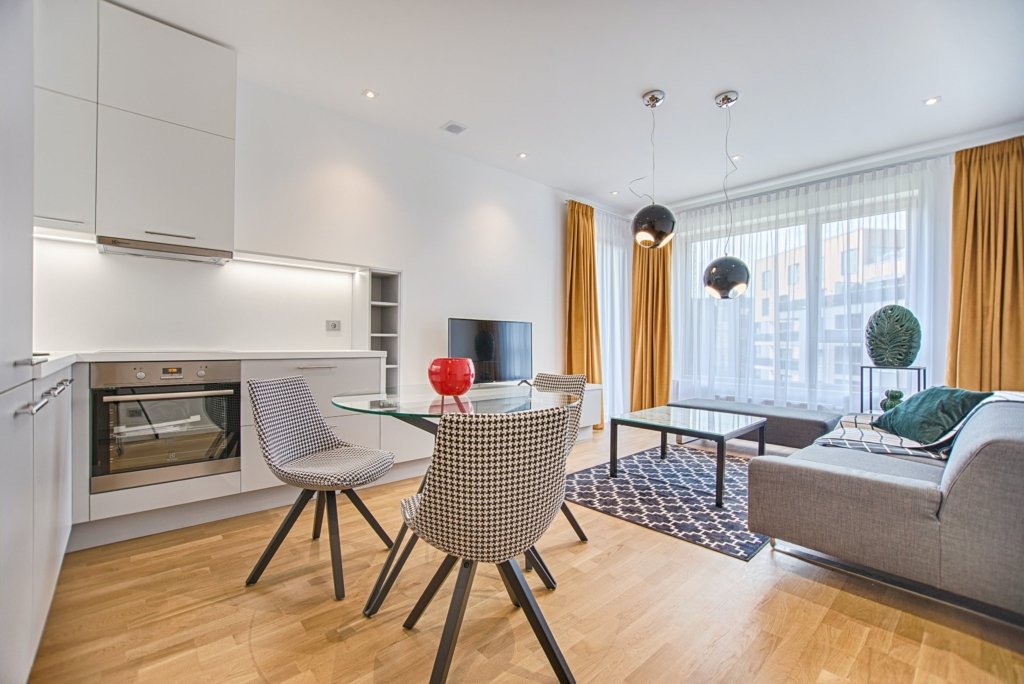Decorating a New Home as a new couple
You’ve just moved in with your significant other and couldn’t be more excited; however your new home isn’t exactly boasting the ideal look and feel you were hoping for. Decorating your new home can be a lot of fun. There’s no shortage of inspiration out there, and you likely already have an idea of the overall theme/look you’re going for, what pictures to hang and where, and which accent pillows you want to use. But if you’re moving in with a partner or roommate, it’s not just your opinion that counts.
What the word compromise really means
Compromise is a word that often sparks different emotions and reactions. Some see it as a sign of weakness or giving in, while others view it as an essential part of conflict resolution and finding common ground. But what does compromise really mean and how can it be applied in our daily lives?
The Definition of Compromise
At its core, compromise is a process of reaching an agreement or settlement by making concessions. It involves finding a middle ground that satisfies the interests of all parties involved. Compromise requires open communication, mutual respect, and a willingness to find a solution that benefits everyone.
The Importance of Compromise
Compromise plays a crucial role in both personal and professional relationships. It allows individuals to resolve conflicts, make joint decisions, and maintain harmony. Without compromise, disagreements can escalate into heated arguments and damaged relationships.
Furthermore, compromise leads to improved collaboration and innovation. When people are open to considering different perspectives and ideas, they can create new solutions that are more comprehensive and effective. Compromise encourages a diverse range of opinions and fosters a sense of inclusivity.

The Challenges of Compromise
While compromise is essential, it does not come without challenges. One of the main obstacles is ego and pride. People often struggle to let go of their own desires and preferences, fearing that compromise means sacrificing their values. However, it is important to remember that compromise is not about losing, but rather about finding equitable solutions.
Another challenge is the fear of perceived weakness. Some individuals believe that compromising is a sign of vulnerability or capitulation. However, true strength lies in the ability to let go of rigid positions and work towards a resolution that benefits everyone. Compromise requires courage and resilience.
Applying Compromise in Daily Life
Practicing compromise in our daily lives can lead to more fulfillment and harmonious relationships. Here are a few ways to embrace compromise:
- Active Listening: Take the time to truly understand the other person’s point of view and empathize with their needs.
- Seeking Win-Win Solutions: Look for creative alternatives that address the concerns of all parties involved.
- Flexibility: Be willing to adapt and adjust your stance in order to find common ground.
- Effective Communication: Clearly express your thoughts and feelings while maintaining respect for others.
By embracing compromise, we create an environment where cooperation and understanding can thrive. It allows us to navigate conflicts with empathy and respect, leading to more balanced and satisfying outcomes.

Tips on how to compromise when decorating a new home
Decorating a new home can be an exciting and rewarding experience. However, it can also be a challenging task, especially when multiple people are involved in the decision-making process. To ensure a harmonious outcome, it is important to find ways to compromise and make everyone feel included in the decorating process. Here are some helpful tips:
1. Discuss and agree on a common style
Before diving into the decorating process, gather everyone involved and have an open discussion about the desired style and theme for the home. Encourage each person to express their preferences and listen to their ideas. Look for common elements that everyone likes and try to find a common ground that reflects everyone’s tastes.
2. Create a shared inspiration board
Before buying any new items or making any major decisions, create a shared inspiration board where everyone can contribute. This board can be physical or digital and should include pictures, color schemes, and design ideas that resonate with the desired style. Encourage everyone to share their inspirations and discuss how they can be incorporated into the overall vision.
3. Delegate specific areas of responsibility
To ensure everyone feels involved and engaged, assign specific areas of responsibility to each person. For example, one person can take charge of the living room, while another focuses on the bedrooms. This way, each individual can have a sense of ownership and creative control over particular spaces, while still contributing to the overall vision of the home.
4. Set a budget and prioritize
Money can often be a source of conflict when decorating a home. To avoid disagreements, set a budget from the beginning and discuss how it will be allocated. Encourage everyone to prioritize their wants and needs, and be willing to compromise on certain items if they exceed the budget. This will help create a realistic plan that everyone can agree upon.
5. Communicate openly and respect each other’s opinions
Open and honest communication is key when decorating a new home with others. Encourage everyone to voice their opinions and concerns, and listen attentively to each other. Even if there are disagreements, it is important to respect each other’s opinions and find a middle ground that satisfies everyone. Remember, compromise is about finding a solution that brings everyone together.
6. Take time to reflect and review
Throughout the decorating process, it is important to take breaks and step back to reflect on the progress. Schedule regular review sessions where everyone can assess the decisions made so far and provide feedback. This allows for adjustments and refinements, ensuring that the final outcome truly reflects the collective vision.
Remember, compromise is a give-and-take process. By involving everyone, sharing ideas, and maintaining open communication, you can create a home that embodies the personalities and preferences of each individual while also achieving a cohesive and harmonious look. Happy decorating!

Be open to new ideas and explore new styles together
When it comes to decorating your home, it’s important to be open to new ideas and explore new styles together. By doing so, you can create a space that reflects both of your unique personalities and tastes. Here are some tips on how to do just that:
Engage in open and honest communication
One of the first steps in exploring new ideas and styles together is to engage in open and honest communication. Talk to each other about what you like and dislike, and be receptive to each other’s thoughts and opinions. By being open and honest, you can ensure that both of your voices are heard and that you’re making decisions that you’re both happy with.

Make a list of common preferences
Another helpful tip for exploring new styles together is to make a list of common preferences. Sit down together and discuss your favorite colors, patterns, and design elements. This will give you a starting point to work from when finalizing decisions for your home. By referring back to this list, you can ensure that both of your tastes are being represented in the final design.
Display both personalities throughout the home
Lastly, make an effort to display both of your personalities throughout the home in different rooms. This will allow each of you to have a space that reflects your individual styles and tastes. For example, you could decorate the living room with a modern design to showcase one person’s preference, while the bedroom can have a more rustic feel to showcase the other person’s taste. By doing this, you can create a home that feels balanced and harmonious.
Being open to new ideas and exploring new styles together is key when decorating your home. By engaging in open and honest communication, making a list of common preferences, and displaying both personalities throughout the home, you can create a space that reflects both of your unique personalities and tastes.

Conclusion
Creating a beautiful home that both you and your partner will be happy with is an achievable goal. By working together and following the tips mentioned in this blog, you can overcome any differences in style and preferences to create a space that reflects both of your personalities and tastes.
Communication is the key to success when it comes to home decor. Take the time to have open and honest discussions about your likes, dislikes, and visions for your home. This will help you understand each other’s preferences and find a common ground.
Researching and getting inspired by different interior design styles can also be helpful. Create mood boards or share ideas from magazines, blogs, or Pinterest to find inspiration that resonates with both of you. This will give you a better understanding of each other’s taste and help you narrow down your choices.
Once you have a clearer vision, it’s time to start shopping. Take the time to visit furniture stores, home decor shops, and even antique markets together. This can be a fun and bonding experience that allows you to discover items that speak to both of you.
Finally, be patient and enjoy the process. Designing and decorating a home takes time, and it’s important to remember that it’s an ongoing project. Your taste may evolve over time, and your home should reflect that. Embrace the journey and take pleasure in creating a space that is a true reflection of your shared love and individuality.Creating a beautiful home that suits both you and your partner is possible through effective communication, compromise, and inspiration from different design styles. Take the time to understand each other’s preferences, blend different elements together, and enjoy the process of decorating your home.





